A hoary marmot living in Mount Rainier National Park now calls Northwest Trek Wildlife Park home and will make his public debut on Friday, Nov. 10. The young marmot, estimated to be born in spring 2022, was fed human food and began aggressively begging for food from people in the national park. According to Mount Rainier National Park officials, the animal had become a danger to himself and people.
“Food-conditioned animals will beg aggressively for food and may bite, causing serious injury and possible infection to people,” said Dr. Tara Chestnut, former wildlife ecologist for Mount Rainier National Park. “Feeding an animal can also potentially spread diseases among animals and people. In most cases, the only solution for food-conditioned animals is to remove them, which typically means humanely euthanizing them.”
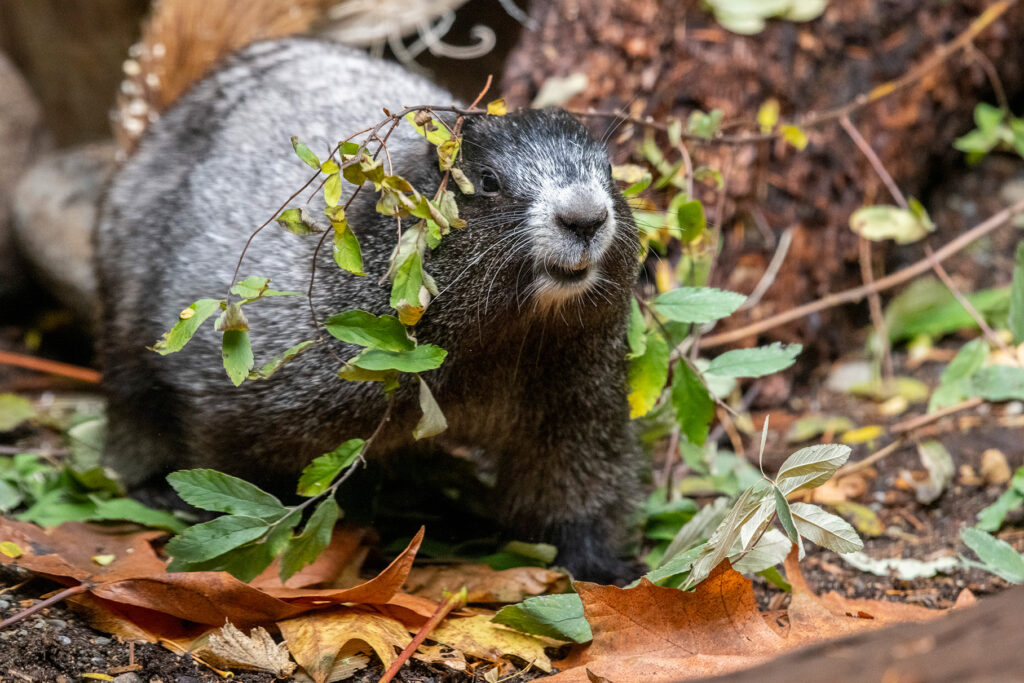
When Dr. Chestnut observed the marmot’s behavior and assessed its young age, she called Northwest Trek’s head veterinarian, Dr. Allison Case, to see if the animal might be a candidate to become an ambassador animal for the wildlife park. An ambassador animal provides real-life lessons to the visiting public about how to be good stewards of public lands. After learning of the animal’s history, Dr. Case determined the marmot would be a good candidate, and the wildlife park had space for him. If the answer had been no, the only other option would have been euthanasia.
“Animals that are habituated to humans and become food-conditioned are often killed by traffic or euthanized for public safety,” explained Dr. Chestnut. “We are fortunate that Northwest Trek can provide a great home for this marmot so he can live a full life. Most wild animals that become habituated to people are not so lucky.”
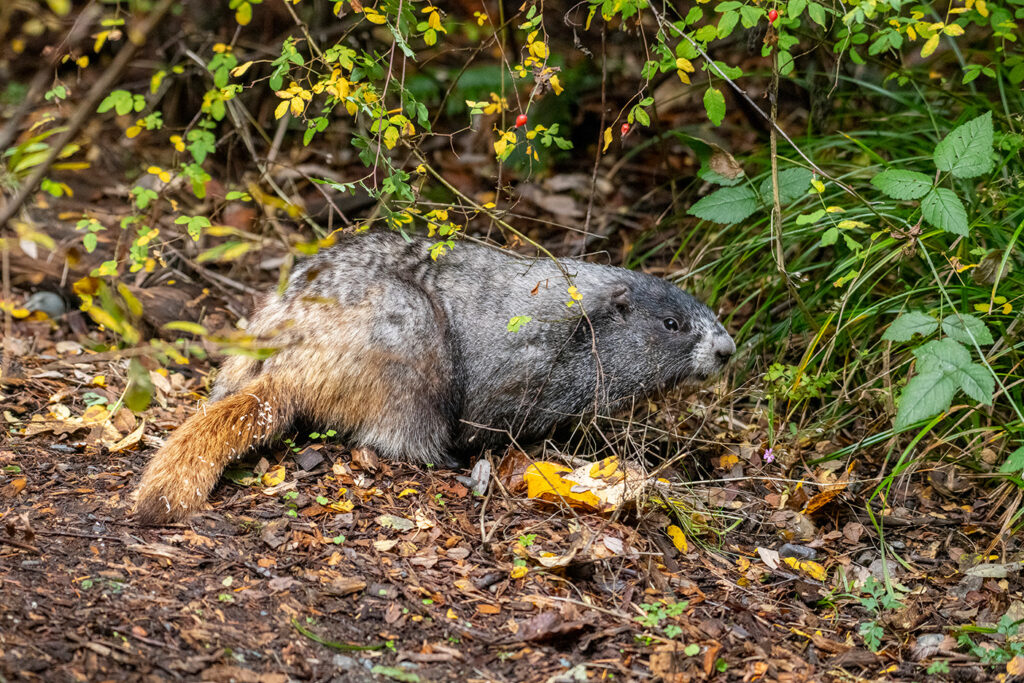
“Together, we agreed this would be an incredible learning opportunity for the public,” said Dr. Case. “This marmot will be a wonderful ambassador for his wild counterparts and encourage our guests to respect and appreciate wildlife from a distance when visiting our parks and other natural areas.”
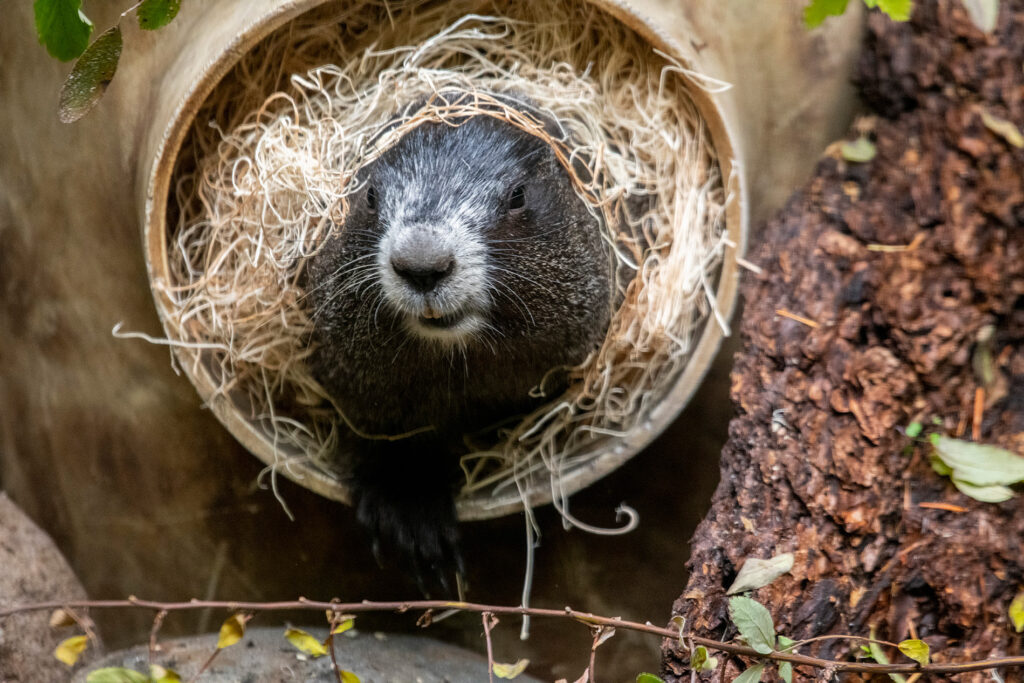
Northwest Trek staff and Dr. Chestnut have worked closely for years on conservation projects, including restoring fishers to Washington’s Cascade Mountain Range. The keepers wanted to honor their longstanding relationship and Dr. Chestnut’s dedication to wild animals and named the marmot “Chestnut.”
Chestnut’s Health Exam
Chestnut is the first hoary marmot to live at Northwest Trek, so keepers, veterinarians, and other staff were mesmerized and curious about Chestnut’s arrival.
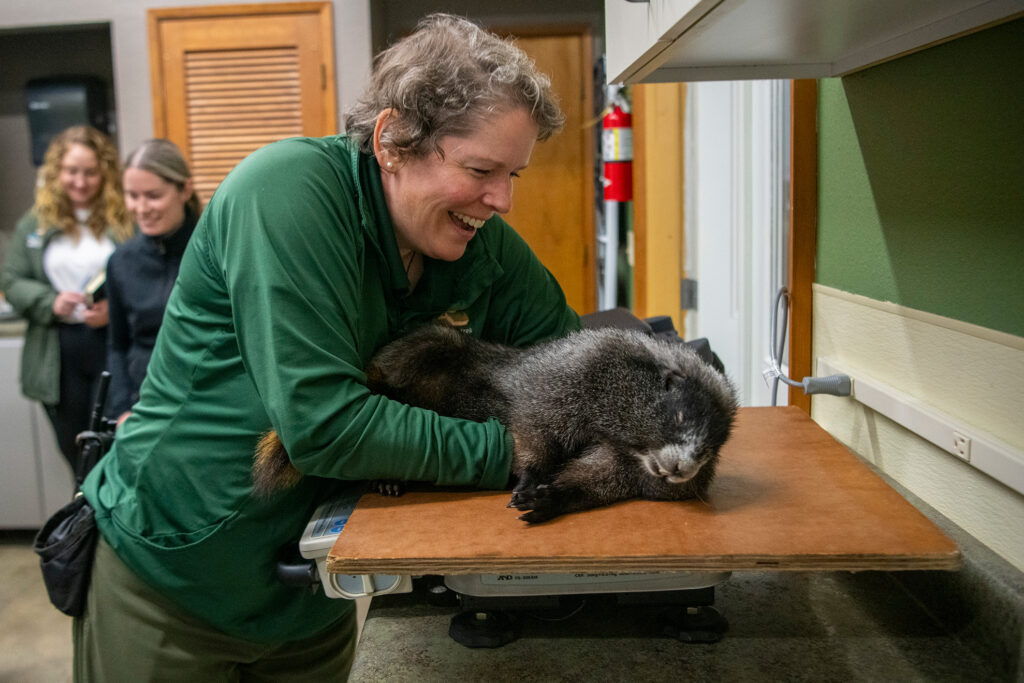
Upon arrival, every animal new to the wildlife park undergoes a comprehensive health exam. During Chestnut’s health exam, keepers took turns admiring the adorably giant rodent while Dr. Case, Associate Veterinarian Dr. Cassidy Soehnlein, and Veterinary Technician Tracy Cramer worked away. With the help of keepers and park scientists, they took blood samples and X-rays, trimmed his nails, gave him essential vaccines, examined his mouth and teeth, and weighed him. Chestnut weighed nearly 9 pounds. Adult males can weigh more than 10 pounds.
“He appears to be a very healthy, young marmot,” said Dr. Case.
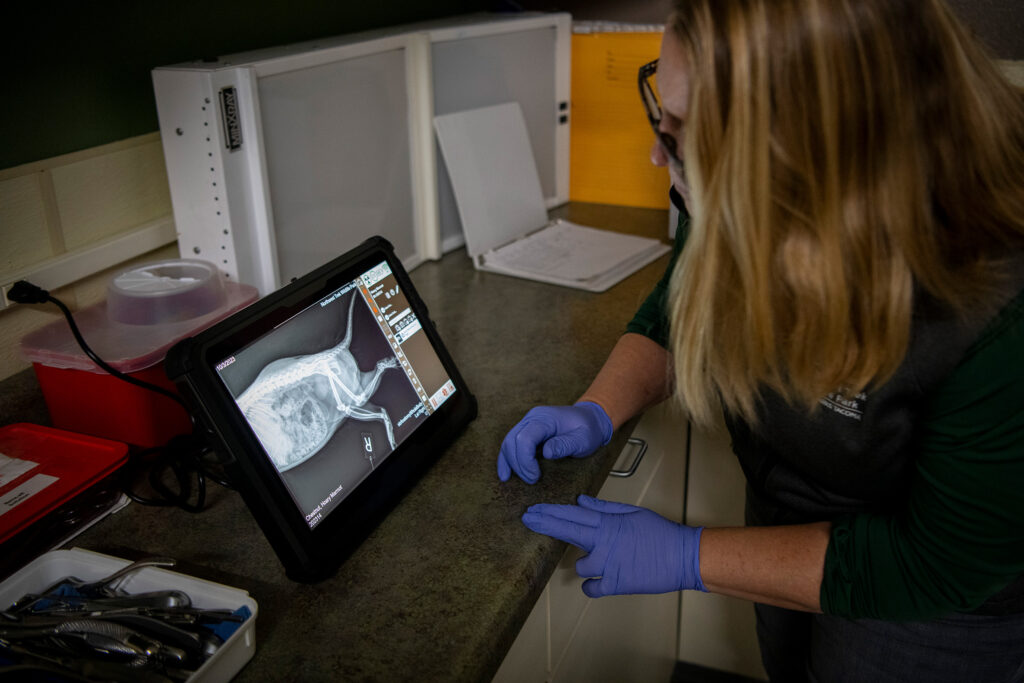
About Hoary Marmots
Hoary marmots are the largest member of the squirrel family. They are common in the subalpine regions of Mount Rainier National Park, which is around the southern limit of their range. They can be found all the way north to Alaska. They eat vast amounts of meadow vegetation, including sedges and lupine. The thick layers of fat they develop allow them to survive eight to nine months of hibernation each year. Hoary marmots are named for the silvery grey fur on their shoulders and upper back. Marmots are sometimes called “whistle pigs” for the exceptionally loud, shrill whistle-call they can make to warn against the presence of potential predators.
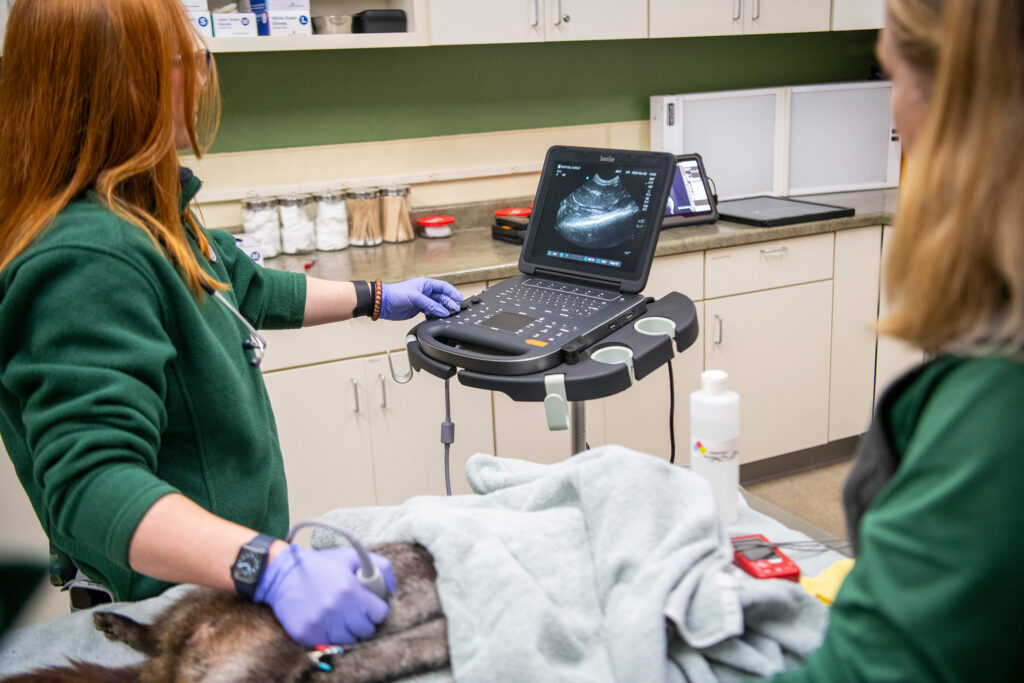
Keep Wildlife Wild
Biologists at Mount Rainier National Park have noticed a change in the natural behavior of the park’s wildlife. Animals have been fed by people and are now “food-conditioned”— meaning they seek out people for food. They learn to steal from picnic tables and trash cans and forage through visitors’ belongings. This behavior is unsafe for both wildlife and park visitors. Food-conditioned animals are very smart. They have learned to change their behavior to convince humans they need our snacks. They don’t; they’ve just discovered they can get an easy meal from us.
Feeding wildlife can be as direct as offering some of your lunch, tossing an apple core out the window, or leaving food or garbage exposed for animals to find. An animal may take just one experience to learn “people equal food.”
Wildlife depends on natural behavior for survival; once a wild animal becomes food-conditioned, it loses its natural fear of people and public places. Not feeding park animals keeps people safe and wildlife wild.
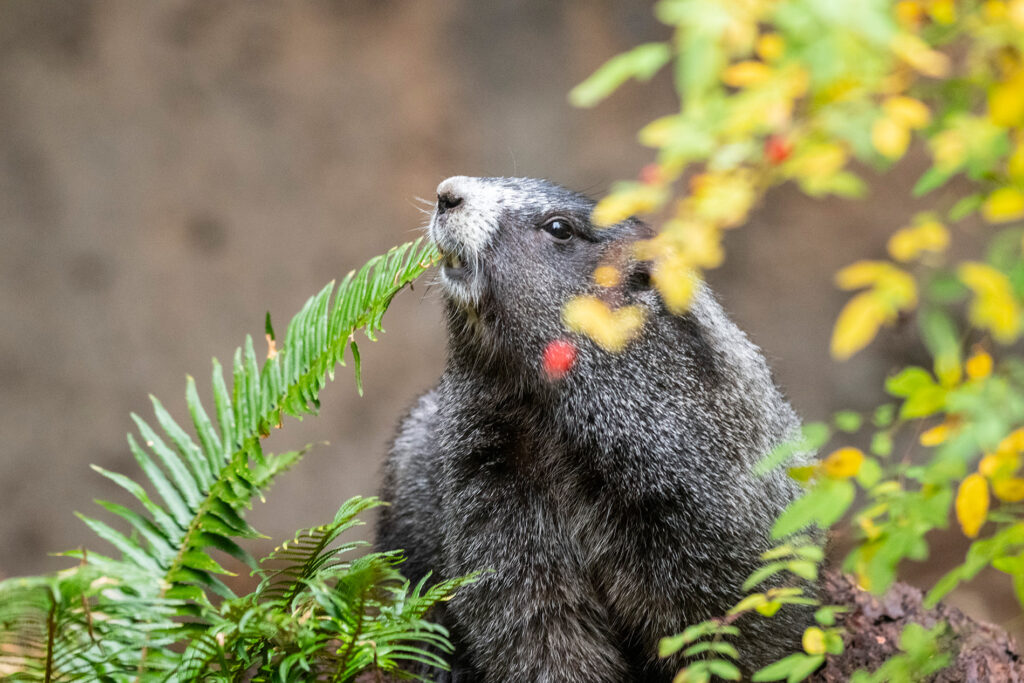
What’s the problem?
- Many animals store food to survive during winter months, but human food does not keep well. Animals that store human food may die as a result.
- Food scraps like apple cores or pizza crusts tossed off the road or trail instead of putting them in a secured trash bin can attract larger predators, such as coyotes and bears. Once these predators become used to humans, they may present a risk to humans and their pets.
- Food-conditioned animals are at a high risk of being involved in vehicle collisions and may die as a result.
- Feeding attracts large numbers of jays and ravens to areas that prey on other songbirds’ eggs and young.
Here’s what you can do:
- Always store food, beverages, and toiletries in a hard-sided vehicle, campground food lockers, or bear-resistant containers.
- Resist the temptation to feed wildlife and keep a safe and respectful distance.
- Keep a clean campsite and pack out all food and garbage from the backcountry.
- Place all garbage inside an animal-proof garbage can or dumpster.
-
- If the garbage is full, do not leave it; take it with you.
Visit Northwest Trek Wildlife Park
Northwest Trek Wildlife Park is open Friday through Sunday from 9:30 a.m.-3 p.m. Guests can look for Chestnut in the wetlands habitat of the wildlife park.